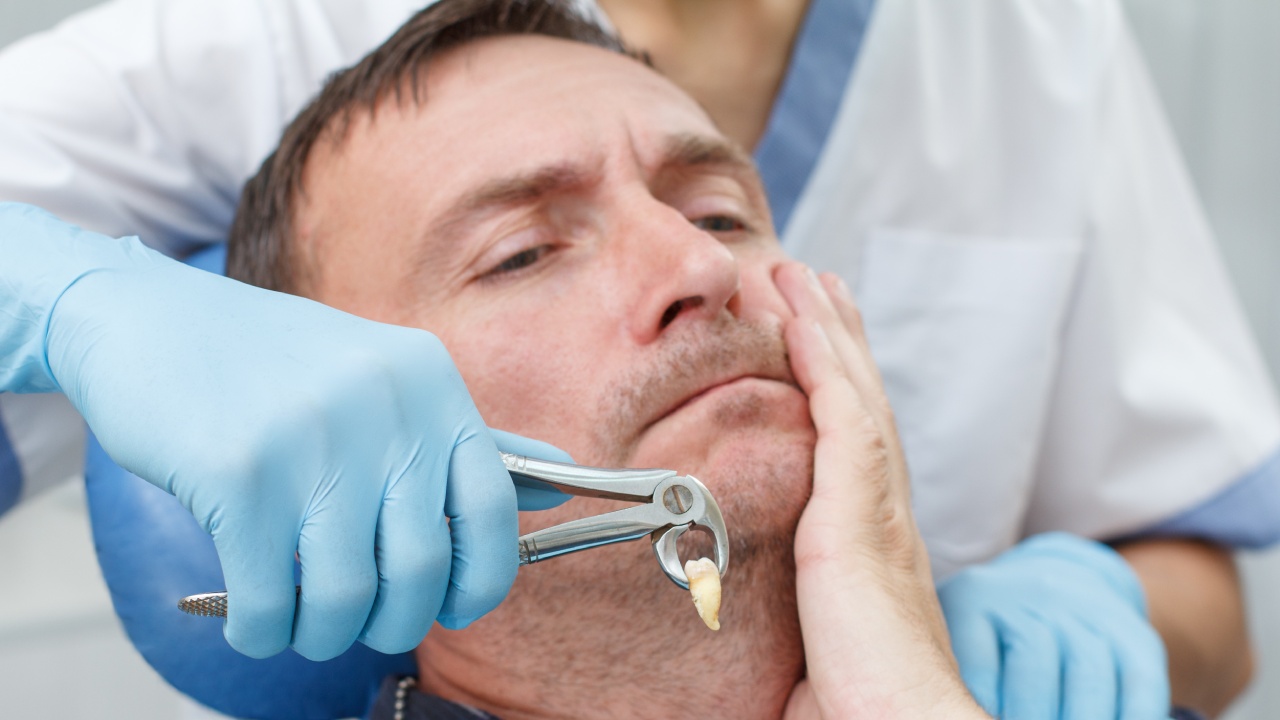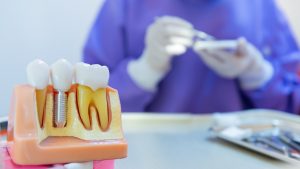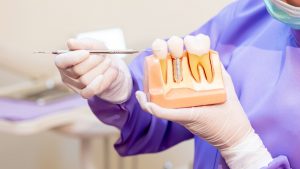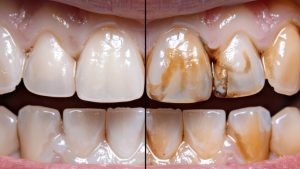Dental implants replace missing teeth by anchoring a titanium post directly into your jawbone. It creates a stable foundation for crowns, bridges, or dentures. They restore your smile, improve chewing function, and help preserve bone health.
Today, dental implants have an impressive success rate, typically between 90% and 95%. Most patients enjoy long-lasting results with proper care. However, like any surgical procedure, dental implants come with potential risks. Complications such as infection, nerve damage, or implant failure can still occur, especially without the right precautions.
In this article, we’ll walk you through the most common dental implant risks and show you how to actively prevent complications. With the right provider, preparation, and post-op care, you can significantly reduce your risk and ensure your implant treatment stays on track for long-term success.
Common Dental Implant Risks and Complications
While dental implants are generally safe and reliable, certain complications can arise, especially when risk factors go unaddressed. Here are the most common problems patients may face and what causes them.
1. Infection at the Implant Site (Peri-Implantitis)
Peri-implantitis is a serious gum infection that affects the tissue and bone surrounding a dental implant. It typically develops when bacteria accumulate around the implant, especially if the patient practices poor oral hygiene or has a history of gum disease.
Causes include:
- Inadequate brushing and flossing
- Smoking or tobacco use leading to cigarette stains
- Pre-existing periodontal (gum) disease
Symptoms to watch for:
- Swelling or redness near the implant
- Bleeding when brushing or touching the area
- Pus discharge or a foul taste
- Persistent pain or tenderness
Research findings:
Studies show that patients with uncontrolled diabetes or who smoke heavily are at significantly higher risk of developing peri-implantitis. In fact, smokers face up to twice the failure rate compared to non-smokers due to reduced healing and immune response.
2. Implant Failure or Rejection
Though rare, dental implants can fail, either early in the healing process or years after placement.
Early failure usually occurs within the first few months if the bone doesn’t integrate properly with the implant (a process called osseointegration). This may result from poor surgical technique, infection, or compromised healing.
Late failure can happen after the implant has been functioning for a while. It often stems from bone loss, overloading (excess force), or untreated peri-implantitis.
Other causes:
- Inadequate bone support
- Poor implant positioning
- Titanium allergy (extremely rare but possible)
If an implant becomes loose, painful, or shifts in the mouth, patients should contact their dentist immediately.
3. Nerve Damage
During implant surgery, especially in the lower jaw, there’s a risk of accidentally damaging nerves, most notably the inferior alveolar nerve, which runs near the lower jawbone.
Symptoms of nerve damage include:
- Numbness or tingling in the lips, chin, or tongue
- Burning sensations
- Persistent pain or sensitivity
- Difficulty speaking or eating due to sensory changes
This risk increases when implants are placed too close to the mandibular canal without proper imaging. While some nerve injuries resolve over time, others may be permanent if not addressed early.
4. Sinus Issues (for Upper Jaw Implants)
For implants placed in the upper back jaw, the maxillary sinuses sit just above the implant site. If a dentist places the implant too deep or fails to assess the available bone height, the implant may penetrate the sinus cavity.
Potential complications include:
- Chronic sinusitis
- Nasal congestion or discharge
- Facial pressure or pain
- Infection spreading to the sinuses
To prevent this, oral surgeons often perform a sinus lift when bone height is inadequate, ensuring safe implant placement.
5. Bone Loss or Insufficient Bone Density
Bone density plays a crucial role in implant success. If the jawbone lacks volume or strength, it may not hold the implant securely, leading to loosening or failure.
Causes of bone loss include:
- Untreated gum disease
- Tooth loss over time (causes natural bone resorption)
- Osteoporosis or certain medications
Even after successful implant placement, ongoing bone loss can occur if the surrounding tissue becomes inflamed or infected.
When dentists detect poor bone quality during the initial exam, they may recommend bone grafting before proceeding with implants to improve stability and long-term success.
Who’s at Greater Risk?
Dental implants have high success rates overall, but certain individuals face a greater risk of complications. Understanding these risk factors can help patients and dentists take proactive steps to ensure a safe and successful outcome.
Smokers
Smoking significantly increases the likelihood of implant failure. Nicotine restricts blood flow, which slows healing and weakens the body’s ability to fight infection. Smokers are also more likely to develop peri-implantitis, a gum infection that can lead to bone loss and implant rejection. Studies show that smokers face up to twice the failure rate of non-smokers.
Prevention tip: Quitting smoking before and after the procedure improves healing and reduces long-term risk.
Diabetics (Uncontrolled)
Diabetes, especially when poorly controlled, can interfere with wound healing and increase the risk of infection. High blood sugar levels impair immune response and slow the osseointegration process, the critical phase where the implant fuses with the bone.
Prevention tip: Patients should stabilize their blood glucose levels and consult both their dentist and physician before undergoing implant surgery.
People with Periodontal Disease
Gum disease weakens the supporting tissues around teeth and implants are no exception. If periodontal disease isn’t fully treated before implant placement, it can lead to peri-implant bone loss, inflammation, and eventual implant failure.
Prevention tip: Patients with a history of gum disease should complete all periodontal treatments and commit to strict oral hygiene before moving forward with implants.
Patients with Bruxism (Teeth Grinding)
Bruxism places excessive force on dental implants, especially during nighttime grinding or clenching. Over time, this constant pressure can loosen the implant, damage surrounding bone, or wear down the crown.
Prevention tip: A custom nightguard can protect implants from grinding-related damage. Dentists may also use stronger materials for patients prone to bruxism.
Individuals on Certain Medications
Some medications can compromise bone health or interfere with healing. Notably:
- Bisphosphonates (used to treat osteoporosis) may impair bone regeneration and increase the risk of implant-related complications.
- Immunosuppressants and certain chemotherapy drugs can reduce healing ability and heighten infection risk.
- SSRIs (a type of antidepressant) have also been linked to higher implant failure rates in recent research.
Prevention tip: Patients should disclose all medications during their consultation. Dentists can adjust treatment plans or consult with medical providers as needed.
How to Prevent Dental Implant Complications
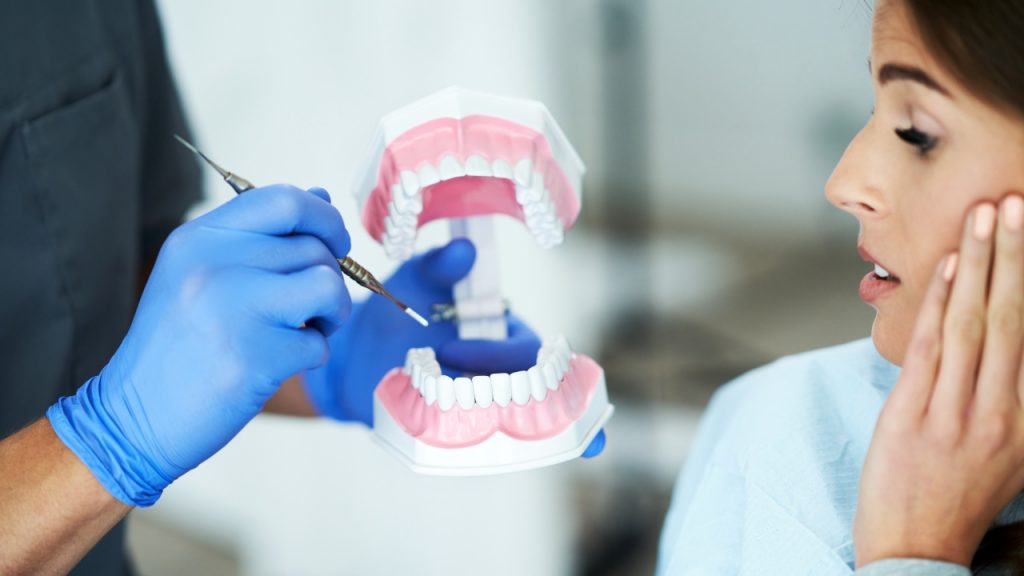
Although dental implants carry some risk, you can significantly lower your chances of complications by following a well-structured treatment plan and taking an active role in your oral health. Here’s how to reduce risk before, during, and after implant placement.
1. Pre-Procedure Evaluation
A successful dental implant begins with a thorough evaluation. Your dentist should perform a complete assessment of your oral and general health to ensure you’re a good candidate.
- Comprehensive dental exam: This includes checking for signs of gum disease, infection and bone loss, that may interfere with implant success.
- 3D scans and CBCT imaging: Advanced imaging provides a clear and detailed view of your bone structure, nerves, and sinus cavities. It is essential for precise planning and risk reduction.
- Medical history review: Your dentist should know if you have conditions like diabetes, osteoporosis, or a smoking habit, all of which may affect healing and integration.
At MySmile Dental Care, patients seeking dental implants in Anaheim receive a full diagnostic workup that includes digital scans and individualized risk assessments to create a safer and more predictable treatment experience.
2. Choosing the Right Specialist
Not all dental professionals are equally equipped to place implants. Experience and training matter to find a good dentist. An improperly placed implant can lead to complications, even in otherwise healthy patients.
- Look for a board-certified oral surgeon, periodontist, or implantologist with specialized training in implant dentistry.
- Ask about their experience, success rates, and use of modern technology.
- Don’t hesitate to request before-and-after photos or patient testimonials.
With more than 20 years of clinical expertise, Dr. Mehru Bhatia at MySmile Dental Care has successfully placed hundreds of implants using advanced tools and techniques that reduce surgical risk and improve healing outcomes.
3. Proper Implant Planning
Careful planning is key to avoiding complications during surgery. Technology now plays a central role in ensuring precision.
- Guided surgery and digital planning software help map out implant placement with pinpoint accuracy, reducing the risk of hitting nerves or misplacing the implant.
- Custom implant selection ensures that the size, angle, and position match your anatomy for optimal integration.
- If bone volume is inadequate, your provider may recommend a bone graft or sinus lift to build the foundation needed for success.
4. Good Post-Op Care
Once your implant is placed, the healing period is critical. How you care for the area in the first few days can affect the overall outcome.
Immediate steps include:
- Applying ice packs to reduce swelling
- Resting for the first 24–48 hours
- Eating soft foods and avoiding hot drinks
Oral hygiene tips:
- Brush gently around the surgical site
- Rinse with salt water or a prescribed antimicrobial mouthwash
- Avoid touching or disturbing the implant area
Watch for early signs of trouble: persistent pain, swelling, bleeding, or pus. Report any concerns to your dentist right away to prevent more serious complications.
5. Long-Term Maintenance
Even after the implant heals, maintaining it is an ongoing process. Like natural teeth, implants require daily care and regular monitoring.
- Visit your dentist every six months for cleanings and checkups. They’ll inspect the implant for signs of bone loss or inflammation.
- Brush and floss daily, especially around the implant crown and gum line. Special implant-friendly floss or interdental brushes may help.
- If recommended, use an antimicrobial mouth rinse to reduce bacteria around the implant.
Patients who stay consistent with home care and dental visits typically enjoy decades of success with their implants.
Conclusion
Dental implants are a highly successful and long-lasting solution for missing teeth, but like any medical procedure, they come with potential risks. Understanding complications and taking steps to prevent them can make a significant difference in the outcome.
With proper evaluation, expert planning, diligent post-op care, and long-term maintenance, most patients can enjoy strong and stable implants that restore both function and confidence. Taking an active role in your dental health is the best way to ensure your implant treatment remains safe and successful for years to come.

